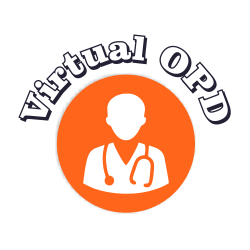Mast. Akshat Chand, is a case of Cerebral Palsy. Akshat’s mother suffered jaundice during the 1st trimester of her pregnancy. Akshat was born at the 10th month by a cesarean delivery and did not cry immediately. His nasal cavity and windpipe were also blocked with placental fluids. The necessary medical interventions were given to him, however, his developmental milestones were delayed.
During the 10th month, Akshat suffered a febrile seizure lasting for about 25 to 30 minutes. This regressed his condition.
In 2017, Akshat’s father learned about NeuroGen BSI attended a medical camp wherein he personally consulted with Dr Nandini. Without wasting further time, Akshat was brought to NeuroGen BSI for cell therapy.
On thorough examination it was noted that Akshat was dependent for all his daily living activities. He has a poor visual tracking and his attention span was quite low. He also had a poor eye contact. His speech was restricted to monosyllables. He was also dependent on his toilet needs. The right side of his body was also under performing. He also had an improper sitting and standing posture.
At NeuroGen BSI, Akshat underwent 7 days treatment of NRRT (Neuro Regenerative Rehabilitation Therapy), a combination of Cell Therapy followed by Rehabilitation comprising of Physiotherapy, Occupational Therapy, Aquatic Therapy, Applied Behavioral Analysis, Speech Therapy, etc.
This intense rehabilitation program was aimed at increasing the strength of Akshat’s affected areas. It was directed towards developing Akshat’s stamina. The therapists at NeuroGen designed exercises that would help Akshat improve his balance, walking, stair climbing, cognition, posture and his grip. Improvement in these aspects meant an increase in his overall quality of life. His parents made sure these therapies were continued upon going back home.
Within months after cell therapy at NeuroGen BSI, Akshat started exhibiting improvements in higher mental functions, specifically cognition and orientation. His sitting and standing balance improved, spasticity reduced, eye contact stabilized and increased in duration. His speech also improved, and he was able to frame and speak sentences. His daily living activities also became age appropriate.
Akshat underwent three rounds of cell therapy at NeuroGen BSI, with subsequent improvements. At the Press conference in Bhubaneswar, Deputy Director & Head of Medical Services at NeuroGen Brain & Spine Institute, Dr. Nandini Gokulchandran said “Cerebral palsy is known to affect approximately one to three out of every thousand children. The prevalence is much higher in infants born with very low weight or premature infants. Most causes of cerebral palsy do not have specific, curative treatments. However, children with cerebral palsy present many medical problems that can be treated or prevented. The initial stage of treatment involves an interdisciplinary team, consisting of a pediatrician, preferable one with experience in neurodevelopmental disorders, a neurologist (or other neurological practitioner), a mental health practitioner, an orthopedic surgeon, a physical therapist, a speech therapist, and an occupational therapist. Each member of the team has important, independent contributions to make in the care of the affected child. Although, these treatment options help improve the quality of life for these patients, they do not solve the problem to its core. Modern medicine and research have together thrown light on the potential use of stem cells for curbing the disastrous effects seen in cerebral palsy.”
There are certain disorders, where despite the best available medical and rehabilitative treatments, till date, medical science has not been able to give the patients satisfactory relief in their medical and physical symptoms or help them to regain the ability to integrate with society. Mental retardation, Autism, cerebral palsy, muscular dystrophy, paralysis, etc. are such type of disorders. A look at the development of advances in the medical sciences shows that the solutions to difficult untreatable disorders have always come from a multi-disciplinary approach. It is only when people from different specialties pool their knowledge, skills and resources, that breakthroughs happen in incurable or difficult to treat medical conditions.
